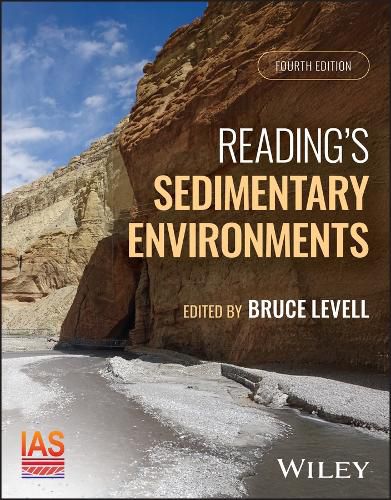Readings Newsletter
Become a Readings Member to make your shopping experience even easier.
Sign in or sign up for free!
You’re not far away from qualifying for FREE standard shipping within Australia
You’ve qualified for FREE standard shipping within Australia
The cart is loading…






The new edition of this well-known classic text again delivers an objective, model-independent view of the different ways in which rocks can be described and interpreted, using facies analysis through an understanding of sedimentary process. Throughout, this fourth edition includes recent work on the dynamics of stratigraphy, especially with respect to understanding extreme events and climate and sea-level change, new information and illustration of resulting 3D geometries, for example from seismic and ground-penetrating radar, new illustrations, including time lapse satellite and seismic imagery, as well as a summary of current research directions.
The main part of the book includes specific chapters for each important depositional environment, from terrestrial to coastal and deep sea settings, with the unifying element of process and facies models. Each chapter can be used independently, as it provides a stand-alone discussion of how a particular sedimentary environment can be reconstructed from a facies analysis of a rock succession, a core, or in some cases, a seismic section or a vertical petrophysical log profile.
Three new chapters have been included: 'The Application of Biogenic Sedimentary Structures to Facies Analysis' addresses the effect of biota on sedimentation, and the interpretation of evidence of biological activity such as burrowing and microbial life; 'Pelagic Environments' discusses Milankovitch cyclicity and time series records of climate change, as well as what can and cannot be learned about the evolution of the oceans; 'Extra-terrestrial Sedimentology' summarizes what is known about the sedimentology and sedimentary facies of Mars, the moons of Jupiter, the Moon and other solar system bodies. These additions are in line with a broader approach to Earth Systems Science and reflect the current developments in the field.
$9.00 standard shipping within Australia
FREE standard shipping within Australia for orders over $100.00
Express & International shipping calculated at checkout
The new edition of this well-known classic text again delivers an objective, model-independent view of the different ways in which rocks can be described and interpreted, using facies analysis through an understanding of sedimentary process. Throughout, this fourth edition includes recent work on the dynamics of stratigraphy, especially with respect to understanding extreme events and climate and sea-level change, new information and illustration of resulting 3D geometries, for example from seismic and ground-penetrating radar, new illustrations, including time lapse satellite and seismic imagery, as well as a summary of current research directions.
The main part of the book includes specific chapters for each important depositional environment, from terrestrial to coastal and deep sea settings, with the unifying element of process and facies models. Each chapter can be used independently, as it provides a stand-alone discussion of how a particular sedimentary environment can be reconstructed from a facies analysis of a rock succession, a core, or in some cases, a seismic section or a vertical petrophysical log profile.
Three new chapters have been included: 'The Application of Biogenic Sedimentary Structures to Facies Analysis' addresses the effect of biota on sedimentation, and the interpretation of evidence of biological activity such as burrowing and microbial life; 'Pelagic Environments' discusses Milankovitch cyclicity and time series records of climate change, as well as what can and cannot be learned about the evolution of the oceans; 'Extra-terrestrial Sedimentology' summarizes what is known about the sedimentology and sedimentary facies of Mars, the moons of Jupiter, the Moon and other solar system bodies. These additions are in line with a broader approach to Earth Systems Science and reflect the current developments in the field.